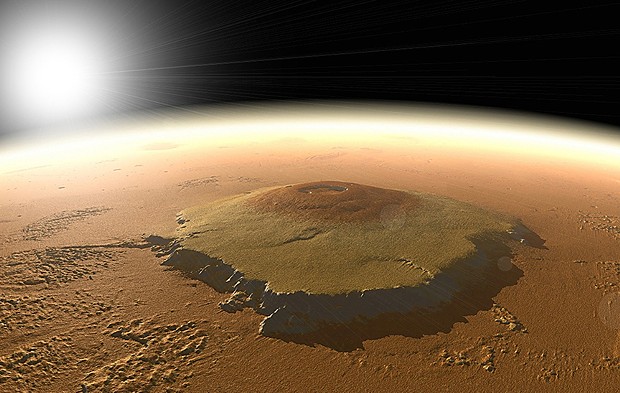[
{
"name": "Top Stories Video Pair",
"insertPoint": "7",
"component": "17087298",
"parentWrapperClass": "fdn-ads-inline-content-block",
"requiredCountToDisplay": "1"
}
]
Suppose, just suppose, we found life on Mars: microscopic critters happily wiggling and metabolizing under the polar ice, or swimming around in an underground pool of water on the warm flanks of Olympus Mons. What would we find when we examined them close up? In particular, how would they reproduce? Would they be like life on Earth, all of which uses the structure of DNA to get from one generation to the next? (From the DNA's point of view, of course, humans, worms, grass and bacteria are its vehicles to survive indefinitely.)
A general belief exists among exobiologists (who study the possibilities of extraterrestrial life and the impact of leaving Earth on known organisms) that any life we found elsewhere would use some other system to reproduce — DNA-like, but with an entirely different architecture. Or maybe it would use silicon rather than carbon as a base for its cellular structure ... assuming it had cells.
But suppose putative Mars-life did have DNA similar to that on Earth. Such a finding would give a boost to the idea that, 4 billion years ago, life on Earth actually originated on Mars. Meteorites from Mars fall to Earth with some regularity — some 30 have been identified — and it's possible for life to survive in their interiors for eons. The Mars-to-Earth transfer mechanism is well-understood: a large body such as an asteroid strikes Mars at an oblique angle, throwing up a shower of rocks and dust. Most of the debris quickly falls back to the surface or goes into orbit around the planet, but some is ejected at Martian escape velocity (5 kilometers per second) to begin its long, spiraling journey sunward. En route, a few rocks are captured by our planet's gravity, eventually falling to Earth as meteorites, perhaps millions of years later — and perhaps with the seeds of life captured within them.
A new twist to this story showed up a few months ago in science blogs. Dr. Steve Benner is a chemist and distinguished fellow at the Foundation for Applied Molecular Evolution in Gainesville, Fla. He claims to have solved a long-standing problem with life starting here on Earth. Creation of single-stranded RNA, long presumed to be the precursor of twin-stranded DNA, almost certainly requires the presence of borate and molybdate, minerals of the elements boron and molybdenum, respectively. For a variety of reasons, the conditions on early Earth were unfavorable to the production of either mineral, unlike on early Mars, where they probably did form. (A recent analysis of a Martian meteorite found boron present.) So the first genetic molecule — the one from which all life on Earth descended — may have come from Mars. According to Benner, "The evidence seems to be building that we are actually all Martians; that life started on Mars and came to Earth on a rock."
Came ... flourished ... and evolved into the 10 million or so species now living here, not to mention countless extinct ones. If this scenario is correct, when we humans eventually walk on Mars, we won't be strangers in a strange land. We'll be home.
Barry Evans ([email protected]), noting that humans share over 99.5% of their genetic material in common, wonders why we can't all just get along.
Speaking of...
-

The Little Drone that Could
Mar 14, 2024 -

Huffman Looks to Abolish U.S. Space Force
Sep 22, 2021 -

HSU Expanding Curriculum with Polytechnic Push
Jun 15, 2021 - More »
Comments
Showing 1-1 of 1
more from the author
-
Doubting Shakespeare, Part 1: Stratfordians vs. anti-Stratfordians
- Apr 25, 2024
-
A Brief History of Dildos
- Apr 11, 2024
-
Eclipse!
- Mar 28, 2024
- More »
Latest in Field Notes
Readers also liked…
-
Trouble on the Line: The Reality Part 2
- Nov 3, 2022


































